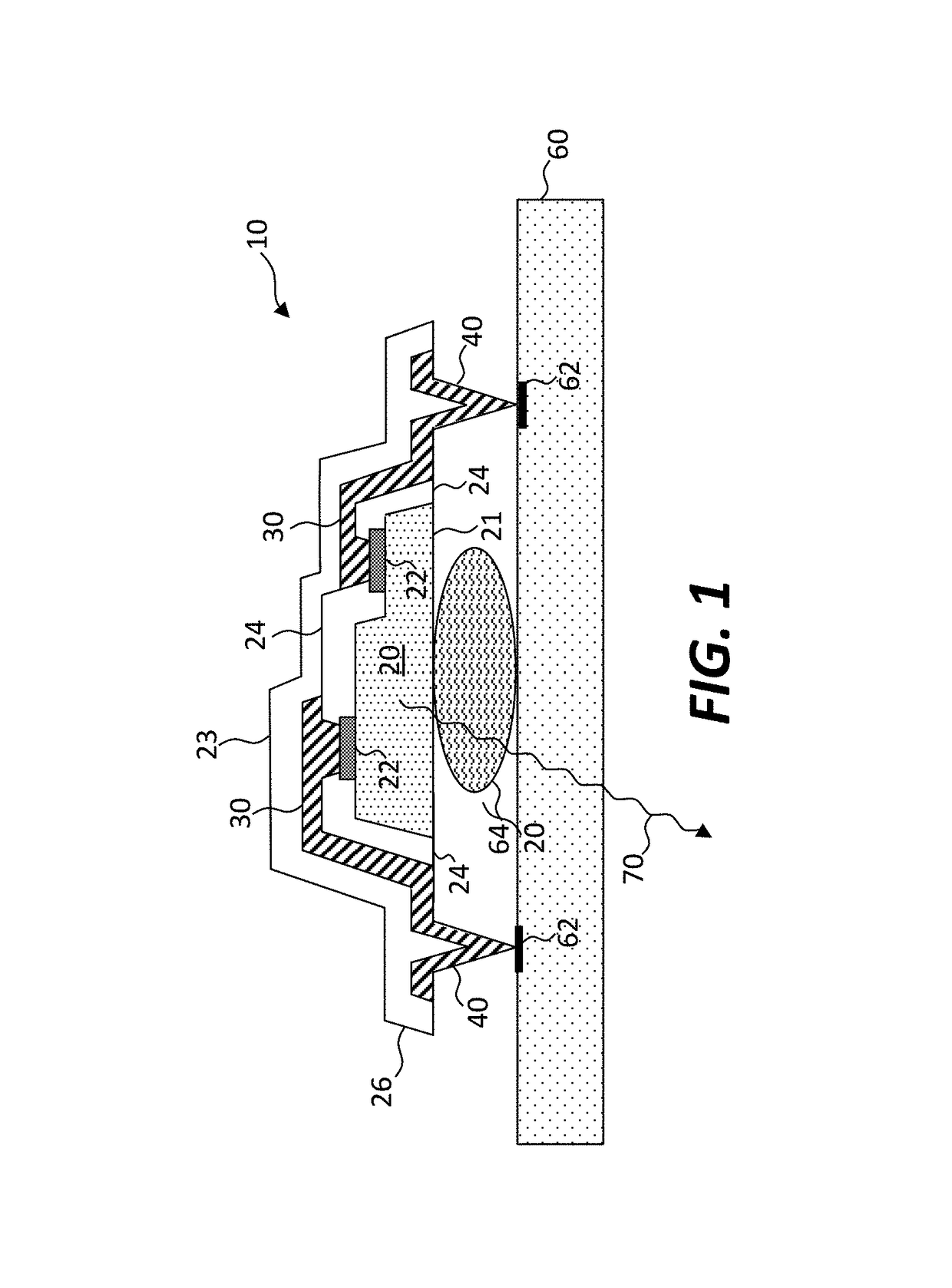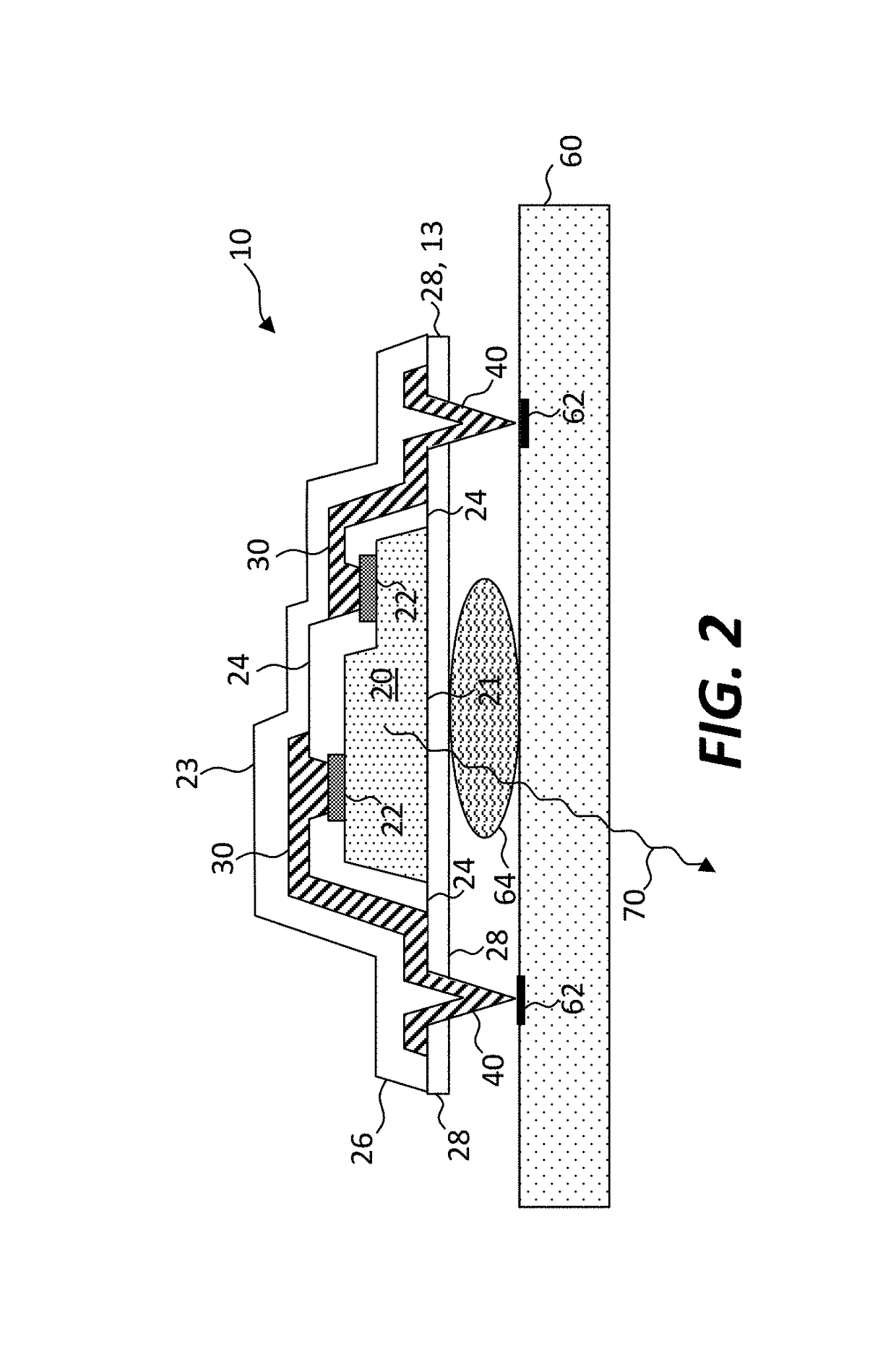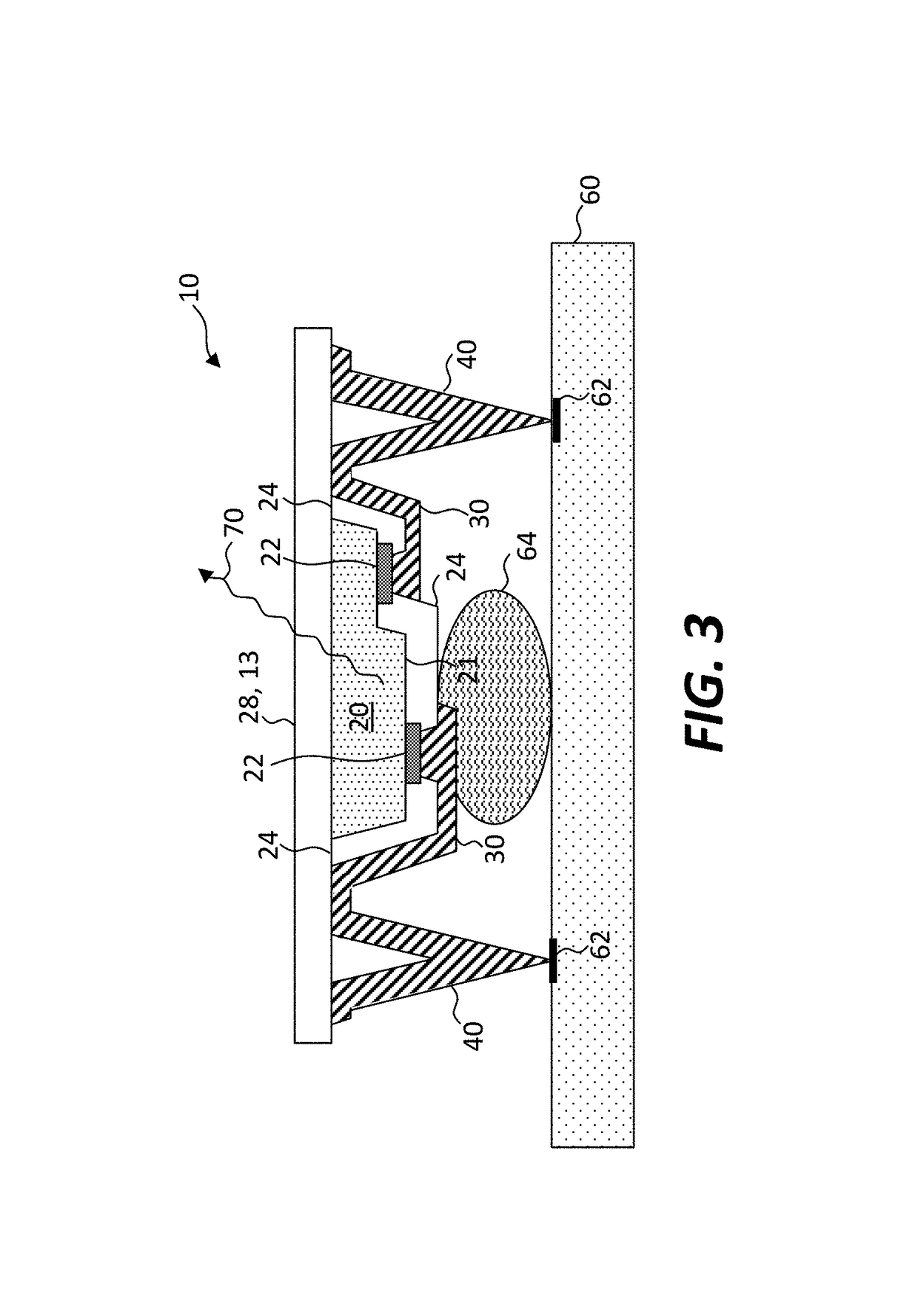Micro-transfer printable electronic component
a technology of electronic components and micro-transfers, applied in the direction of basic electric elements, electric devices, solid-state devices, etc., can solve the problems of waste of material and processing costs, the performance of the above-mentioned technology is lower than the performance of the other integrated circuit, and the above-mentioned technology has some limitations, so as to achieve the effect of fewer process steps, simple and inexpensive electrical interconnection process
- Summary
- Abstract
- Description
- Claims
- Application Information
AI Technical Summary
Benefits of technology
Problems solved by technology
Method used
Image
Examples
Embodiment Construction
[0096]The present invention provides structures and methods for electrically connecting relatively small electronic devices such as integrated circuit chiplets or light-emitting diodes (LEDs) to a relatively large destination substrate in an efficient and cost-effective way and with fewer processing steps. Each micro-transfer printable electronic component can include a single integrated circuit, for example a digital circuit, an LED, a photo-diode, or a photo-transistor. Alternatively, the micro-transfer printable electronic component can include a circuit having multiple integrated circuits or other electronic or opto-electronic elements as well as electrically conductive wires interconnecting the multiple electronic elements to form a circuit on a component substrate. An electronic component can receive or provide electronic signals, but can also include electronic devices that have other modalities, such as optical elements, magnetic elements, electrical field elements, emission...
PUM
 Login to View More
Login to View More Abstract
Description
Claims
Application Information
 Login to View More
Login to View More - R&D
- Intellectual Property
- Life Sciences
- Materials
- Tech Scout
- Unparalleled Data Quality
- Higher Quality Content
- 60% Fewer Hallucinations
Browse by: Latest US Patents, China's latest patents, Technical Efficacy Thesaurus, Application Domain, Technology Topic, Popular Technical Reports.
© 2025 PatSnap. All rights reserved.Legal|Privacy policy|Modern Slavery Act Transparency Statement|Sitemap|About US| Contact US: help@patsnap.com



